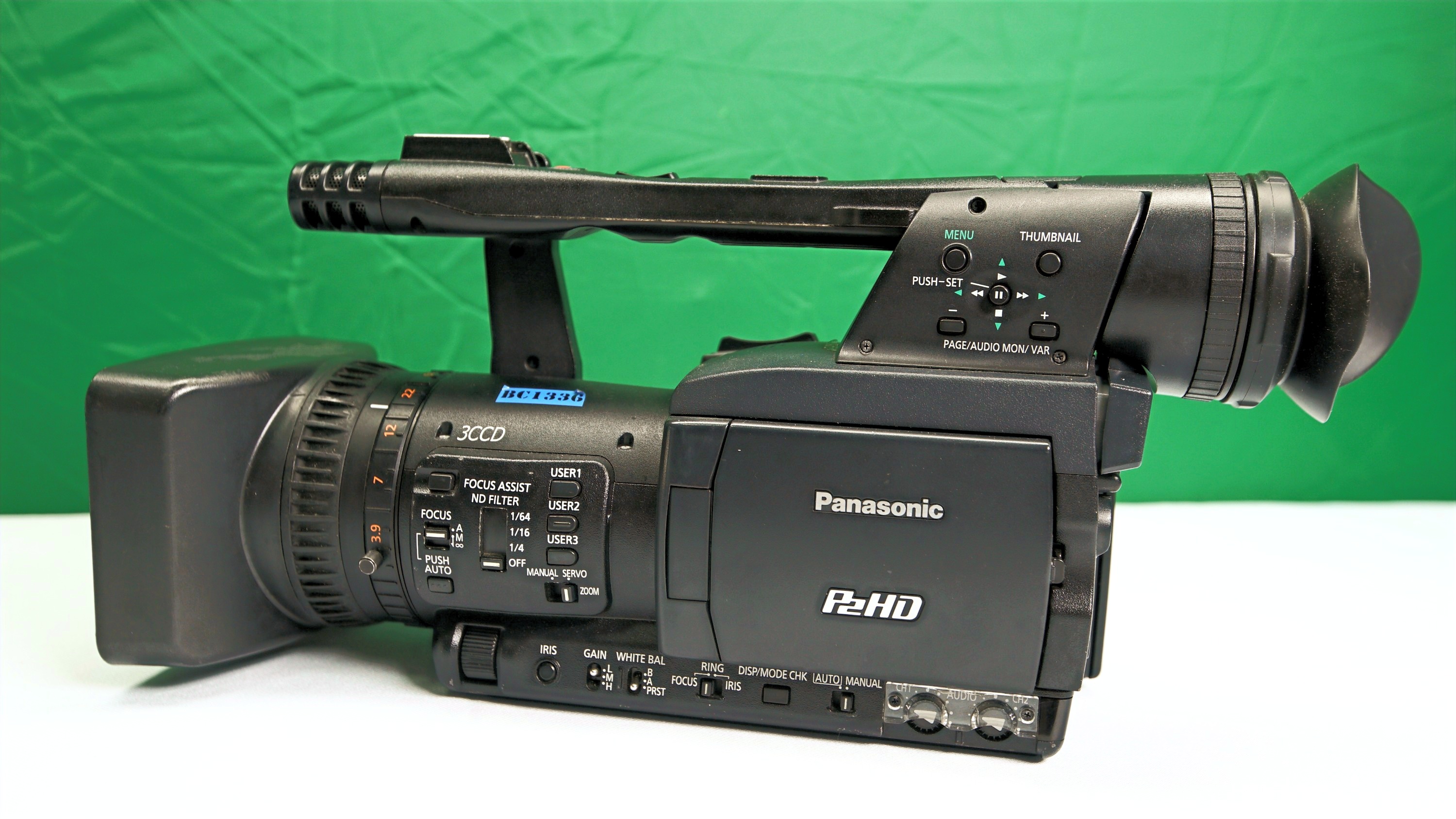


Picture controls such as white balance, gain, and the ND filters (1/4, 1/16, 1/64) are all represented with physical switches that click satisfyingly into place, letting you know in a tactile fashion whether they’ve been switched or not. The iris is controlled one of two ways, primarily as a small rotating knob near the bottom left of the camcorder, or with a flip of a switch you can use the focus ring as an iris control (locking the focus in the process). The lens controls have a free rotating ring for focus, and a zoom control. In SD it can record 480i60, 480p30, 480p24 in either DVCPRO or DVCPRO 50.Ĭoming from Panasonic’s Professional line the HPX170 has all the manual controls that you would expect, nicely laid out and conveniently placed.

The HPX170 records in many different formats and frame rates. These imagers coupled with a new digital signal processor (DSP), that perform 14-bit A/D conversion, and scan at 1080p60 makes sure the camcorder has a lot of latitude for the image before it gets compressed down to DVCPRO HD. The HPX170 uses three 1/3″ progressive scan 16:9 CCDs as imagers, giving nice color reproduction. Expanding the wide end of the lens gives you much more flexibility in your compositions. This is a great trend that Were happy more manufacturers are getting on board with. The lens is a 13x Leica Dicomar, with a wide angle of 28mm and a telephoto reach of 368mm (35mm equivalent). While it does give you a bit of wrist strain after about an hour of shooting, the squat form factor leaves plenty of room for lots of manual controls, ports and connectors. The camcorder itself has a bulldog-like squatness reminiscent of the AG-DVX100 and HVX200 that typifies Panasonic’s professional handheld series. Panasonic is betting that the concerns of 2005 have been addressed and it’s time to move forward to a bright new P2 based future. In fact, the HVX200 still came with a DV tape drive, just in case.įast forward to this year and Panasonic has released the AG-HPX170, a handheld professional camcorder that’s ditched the DV tape transport and embraced memory recording on to P2 only. At the time going tapeless was still considered a bold gamble, filled with unknown risks such as archiving uncertainty and limited record times. It’s been about three years since Panasonic Broadcast released the acclaimed AG-HVX200 and the P2 workflow to the world.


 0 kommentar(er)
0 kommentar(er)
